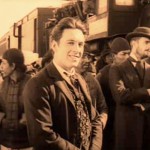Dir. by John Ford
According to Tag Gallagher’s biography, John Ford: The Man and His Films, only five of the fifty or so films Ford made between 1918 and 1924 have survived; two of them, Just Pals (1920) and The Iron Horse (1924), are included in the Ford at Fox DVD collection. Just Pals is a fun little romp starring Buck Jones as a charming ne’er-do-well who falls in love with the local school teacher, befriends a young runaway, thwarts a crime, and generally makes trouble for himself and for others.
The Iron Horse is a much more ambitious and fascinating picture. The story revolves around the laying of the first transcontinental railroad, complete with a final-reel reenactment of the driving of the Golden Rail at Promontory Summit, Utah, that features the actual locomotives that first met there in 1869. (We know they’re the actual locomotives thanks to a series of title cards that notify viewers of the filmmakers’ every effort to achieve historical authenticity.) At nearly 150 minutes, The Iron Horse was a massive production, employing thousands of extras, builders, cooks, rail layers, Indians, cavalrymen, cattle, and horses, and spawning countless legends. Gallagher quotes assistant Lefty Hough: “The Ford outfit was the roughest goddamdest outfit you ever saw, from the director on downward. Ford and his brother, Eddie O’Fearna, were fighting all the time.” Ford remembered the production as “births, deaths, marriages, and all in the icy cold.” The Iron Horse went on to gross more than $2 million and became the first Fox film to play on Broadway.
Along with simply being a tremendous pleasure to watch, The Iron Horse offers a fascinating peek into the evolution of the Hollywood film style. By 1924 — and with four dozen films under his belt — Ford already understood the mechanics of what would eventually be called standard continuity editing, and so, for me, the most interesting moments in the early films are when something breaks, as in the following sequence.
The Establishing Shots
Shot 1 lasts for only a few seconds, giving us too little time to get our bearings or to pick out any recognizable faces (there aren’t any, actually). What are we looking at, exactly? And from where are we looking?
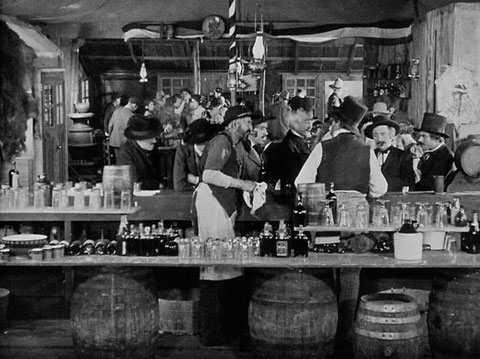
In the next four shots, none of the eyelines match. The two men in the first two shots are seated together, though you’d never know it from Ford’s montage, and he’s also made it impossible for us to situate them at any particular spot in the saloon.
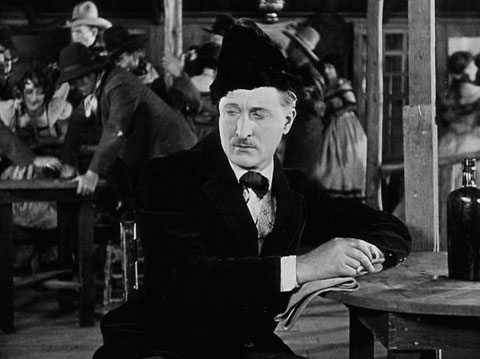
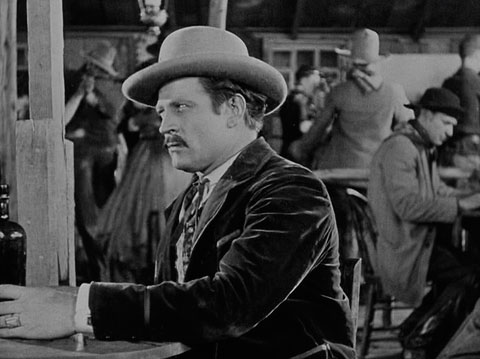
The bad guy enters, and a group of men turn to look at him. But where are they in the room? (Go back to shot 1 to find them.) And who are these guys? So far, the two men seated together are the only people in the room who appear elsewhere in the film.
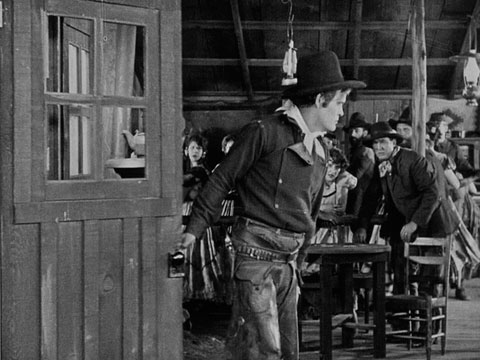
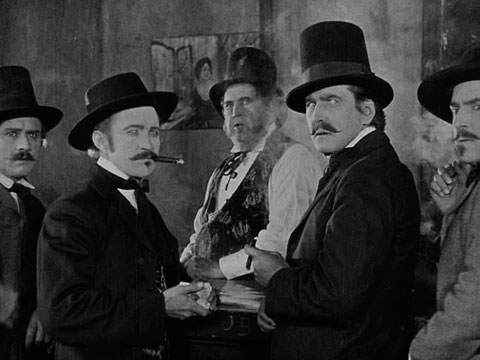
The Reestablishing Shots
Now that most of the characters have made their appearance, Ford begins to map out the room. Bad guy mosies toward the bar . . .
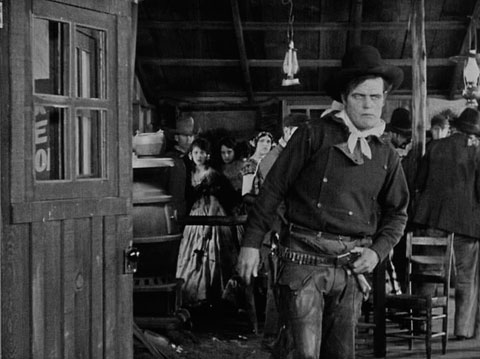
Bartenders remove the mirror . . .
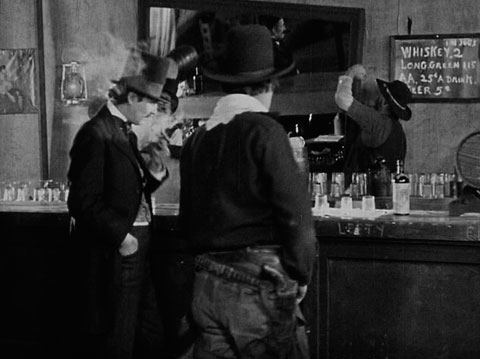
And now we’re back to that odd position from shot 1. It turns out that we’re standing behind the bar. In this cut, Ford essentially gives us an eyeline match from the p.o.v. of the mirrorless wall! This time, however, we’re also allowed to figure out where everyone is standing.
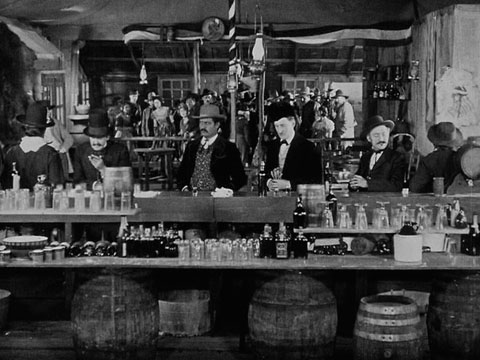
And in case we’ve lost our bearings, Ford jumps 180 degress to the other side of the room and cuts together three medium shots from one end of the bar:
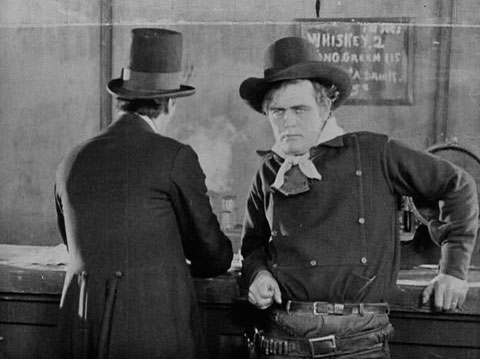
. . . and then from the other end of the bar:
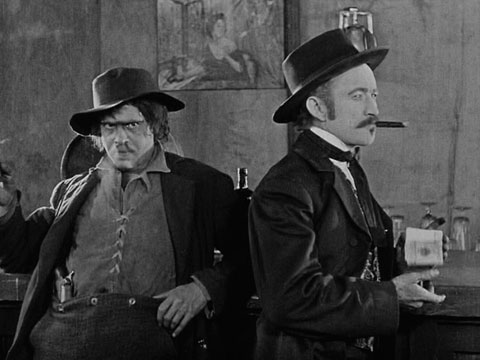
. . . and then, finally, from the middle of the bar:
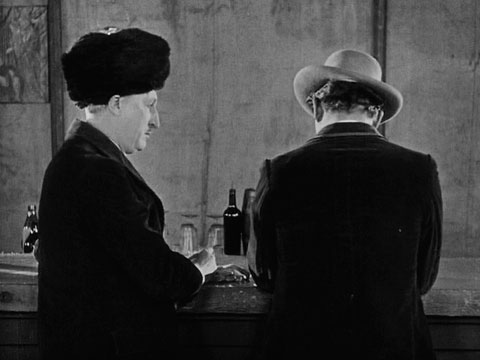
The Crosscut
Ah, our beautiful young lovers, George O’Brien and Madge Bellamy. In most respects this is standard, silent-era, melodramatic cross-cutting. After introducing a mysterious batch of villains, Ford cuts to our hero, who relents to his love’s request that he lay down his guns. O’Brien even strikes his best Valentino pose, staring off meaningfully into the distance. (Between this film and Ford’s Three Bad Men (1926), George O’Brien is fast becoming one of my favorite leading men of the silent era.)
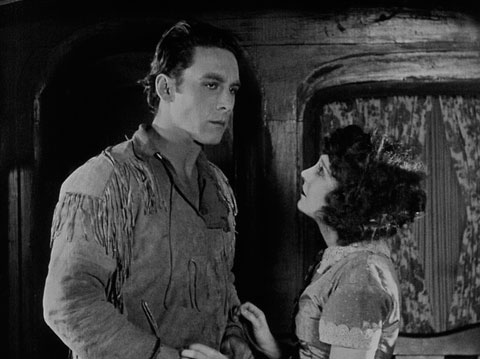
But what I love are the moments when life interrupts the theatrical staging, as when Bellamy bites her lower lip, an incredibly sexy and unexpected rupture of silent film convention:
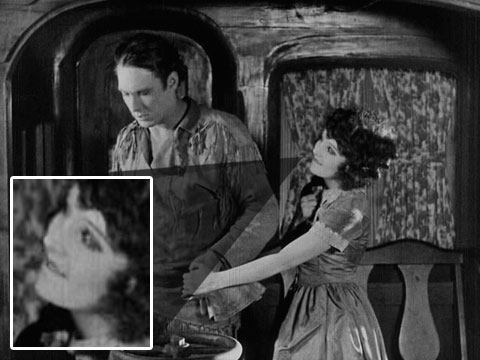
Or the way she takes his hand in hers and brings it to rest, very slowly, on her . . . dress. Beautiful!
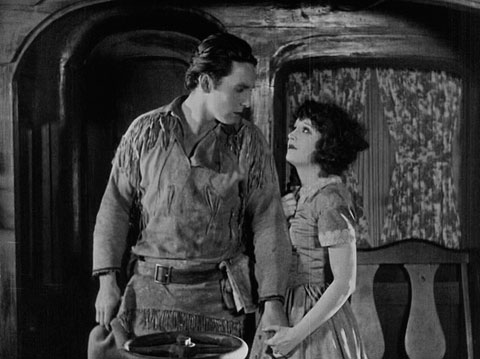
The Showdown
And finally our hero arrives at the saloon, walking straight into the trap:
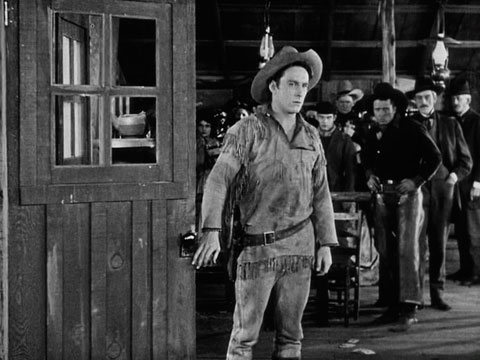
Which springs all of the mysterious men into action:
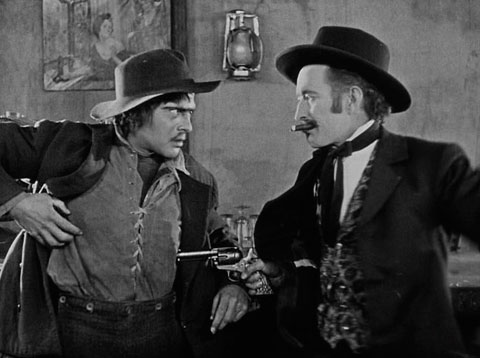
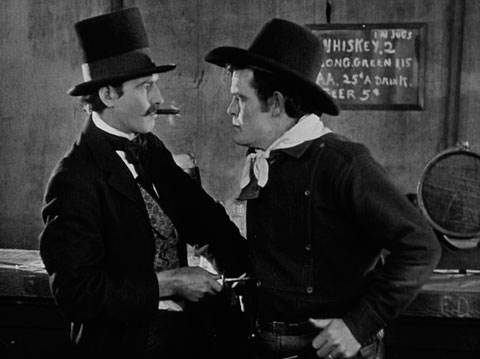
Leaving only our hero, who is defenseless, and our central villains, the fop and the sadistic mastermind:
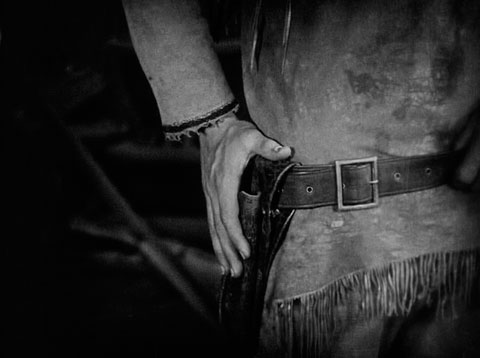
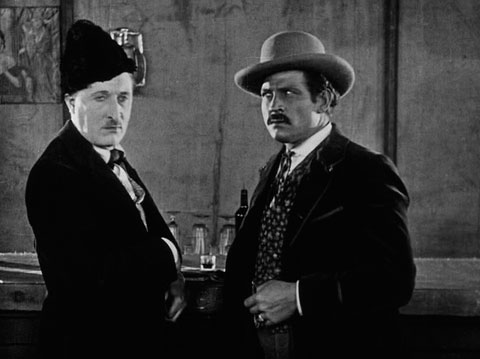
All of the strange editing has served to focus the emotional energy of the sequence onto this one point: the showdown between the chaste Fordian hero, who is protected on all sides by an amorphous social structure, and the foppish villain. That the ensuing fist fight turns out as something of a draw is irrelevant. The hero wins the battle before the first fist is thrown.
